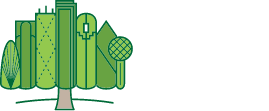Dallas has always been a green city. Home to the Great Trinity Forest, expanses of prairie grassland and countless creeks, our city also boasts 381 parks. That’s 23,467 acres of recreation facilities and natural beauty.
Despite these impressive numbers, Dallas sits squarely in the middle of the pack among American cities in the Trust for Public Land’s ParkScore rankings. Nevertheless, Dallas ranks ahead of both Houston and San Antonio according to the Trust’s metrics. Additionally, city officials are committed to increasing the percentage of city property dedicated to parks, as evidenced by plans to build four new state-of-the-art parks across downtown.
Parks aren’t solely the responsibility of city leadership, however. Parks need to be used, and their value increases the more they are visited, enjoyed and treated by city-dwellers as integral to their quality of life. You could say urban development is a dialogue, involving local government, citizens, philanthropists, real estate leaders, small business owners and environmental scientists.
What other American cities are leading the way in terms of park stewardship? What models can Dallasites take inspiration from, as we look forward to the city becoming even more sustainable and livable? Here are five cities that are doing parks right — and doing right by their citizens.
1. Cincinnati, OH. Cincinnati’s parks system is highlighted by five nature centers, which altogether feature more than 3 miles of handicap-accessible hiking trails. Park visitors also enjoy lovely hilltop views, bird-watching opportunities, access to fishing, beautiful Art Deco architecture (courtesy of the Krohn Conservatory) and a full-service carousel that can be reserved for special events. Cincinnati relies on special levies (property tax increases) for a portion of its parks funding. A ballot measure to raise $18 million a year for park operations for the next 10 years is expected to pass this November.
2. Denver, CO. It may seem a bit unfair to compare relatively flat Dallas to a city situated in such close proximity to the Rocky Mountains. But like Dallas, Denver faces park management challenges as the population density of its urban core increases. Denver has even more to offer than its mountain parks (Red Rocks, Summit Lake), spectacular though they may be. In fact, the jewel in Denver’s parks crown may be its downtown City Park. Within the 300 acres of this urban oasis, you’ll find the Denver Zoo, the Denver Museum of Nature and Science, baseball diamonds, soccer fields, picnic areas and two lakes that support recreational boating. The surrounding neighborhood, especially around Colfax Avenue, has benefited from its proximity to “the Central Park of the Mountain West” and features many popular restaurants and shopping destinations.
3. Minneapolis/St. Paul, MN. The Twin Cities took first and second honors on the ParkScore list for 2016, and for good reason. Fifteen percent of each city’s area is dedicated to park space. Minneapolis is notable for the accessibility of its parks, and, regardless of age or income, residents take full advantage of park resources with impressive frequency. Further, Minneapolis is taking additional steps to innovate within its parks system. The city recently participated in an international study “to measure the benefits of planting trees as a return on investment.” And now Minneapolis’ parks are getting smarter. Solar panel installations in the city’s Rev. Dr. Martin Luther King, Jr. Park, East Phillips Park and Webber Park promise significant savings in terms of lighting, heating and cooling park facilities.
4. San Francisco, CA. Golden Gate Park is one of the most iconic public spaces in the United States, if not the world. But what makes San Francisco’s park system so exceptional (enough to rank in ParkScore’s top 5) is just how extensive it is. Anyone living in San Francisco lives within a 10-minute walk of a park of some sort. The City by the Bay is also justly celebrated for its Urban Agriculture Program. This initiative goes beyond the support of community gardens. Monthly classes are offered on a variety of topics, plants are made freely available on a semiannual basis and citizen stewardship of all public green spaces is encouraged. Further, while a great many cities are closing or phasing out their public pools, the city has just announced it will be making major capital improvements in this area.
5. New York, NY. Admit it: It’s hard to think “city park” and not immediately conjure images of New York’s Central Park, its jogging paths, green fields and historic statuary. But Dallasites have much more of a connection to New York’s High Line, which is as 21st century as Central Park is 19th. Like Klyde Warren Park, the High Line is a linear park that represents a major initiative to reclaim urban blight — in this instance, an abandoned railroad spur. Since opening in 2009, the High Line has transformed the Lower West Side, from its Meatpacking District to the Javits Convention Center. The High Line is also a successful public-private venture similar to the one that brings our four new parks to downtown Dallas. How successful? The High Line welcomes almost 5 million visitors every year and is a major factor in driving hundreds of millions of dollars of reinvestment in the Chelsea neighborhood.
Stay up to date on all Dallas’ park and urban development news by following Downtown Dallas Parks Conservancy on Facebook and Twitter and signing up for our newsletter.


